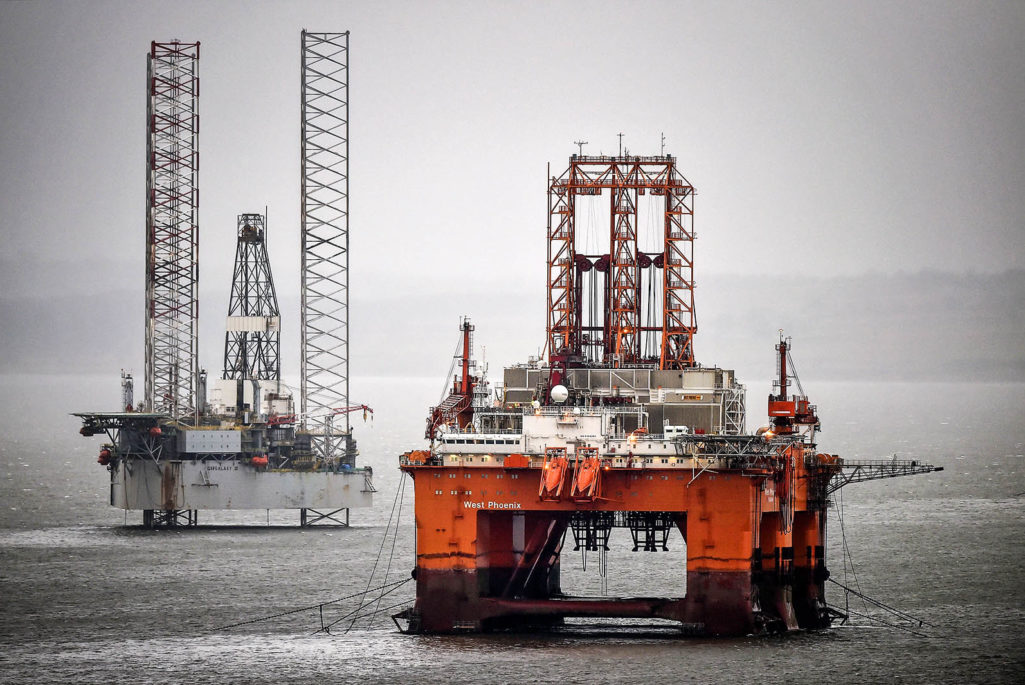Oil Industry Safety, Maintenance at Risk in Wake of Price Falloff

The West Phoenix rig stands amongst other rigs which have been left in the Cromarty Firth on February 2, 2016 in Invergordon, Scotland. Rig platforms are being stacked up in the Cromarty Firth as oil prices continue to decline having a major impact on the UK's North Sea oil industry leaving thousands of people out of work.
Photo: Jeff J. Mitchell/Getty Images
Historical loss trends reveal a potential correlation between significant falloffs in oil prices and increased energy losses. Energy companies must exercise caution when implementing cost-cutting measures designed to counteract or offset the effects of low oil prices to ensure history doesn’t repeat itself.
There is a concern, from the point of view of process safety and loss control, that lower revenues from oil and gas production and falling demand could potentially result in reductions in investment in risk-control measures; the reduction in maintenance and inspection activity could result in a higher rate of accidents.
Historically, in the upstream market, periods of significant pricing falls have been met by:
- New projects being shelved or canceled.
- Increase in redundancies and hiring freezes.
- Cuts in infrastructure and maintenance spending.
- Less investment in health and safety measures and employee training.
These cost-cutting decisions appear to have led to increased losses in the past, according to Marsh research (see Fig. 1).
Similar reductions occurred between 1980 and 1986 when Brent crude oil price fell from $35 to $15 per barrel, in the late 1990s when the price fell to less than $10 per barrel and in 2008 when the price fell from more than $100 to $32 per barrel. A period of increased frequency or larger losses has typically followed soon after.
Over the past 20 months, oil prices have fallen by around 70 percent. Already, companies have been canceling projects and making staffing reductions. It is estimated that projects worth up to $380 billion have been shelved, according to consultancy group Wood Mackenzie. Meanwhile, a recent survey in the Chemical Engineer revealed that the majority of respondents had seen redundancies within their companies. Additionally, 36 percent had seen training budgets cut and 45 percent reported hiring freezes.
While project cancellations and redundancies are easy to quantify due to publicly available information, cuts in maintenance, health and safety measures and employee training are far more difficult to assess. With a prolonged period of low oil prices expected, however, the question now is when will oil and gas companies begin spending less on maintenance and health and safety.
With today’s new oil price paradigm, it is important that the industry looks to the past for lessons on how best to manage cost savings in a measured manner that limits any potential downside.
This includes making decisions based on the conclusions of assessments to ensure that any risks of major losses introduced by changes to safety expenditure are reduced and mitigated effectively. For example, any significant organizational changes as a result of staffing reductions should be subject to an organizational management of change assessment—including a risk assessment—to ensure that any risk introduced as a result of loss of knowledge or expertise due to staffing changes is mitigated.
In such instances, it is also important to ensure that critical inspection and maintenance tasks continue to be delivered on schedule. Senior managers should receive regular reports of key performance indicators regarding maintenance and inspection. These should be selected and tracked so that they are indicative of the key tasks required to maintain process safety performance.
Every business decision, especially those involving cutting costs, should be made taking into account the potential risks involved. This way, cost-saving initiatives will have long-term value and impact, rather than simply transferring today’s savings into tomorrow’s major costs.
Many forecasters are predicting that oil prices will remain low for some time to come. It is vital that cost-saving measures implemented by oil companies are considered and measured. Cuts that extend too deeply into an organization could have a significant impact on loss records and, ultimately, cost more to rectify than they initially saved.
Companies should also be looking to take additional risk off their balance sheets at a time when the cost of insurance capital is at a historic low. Clearly, opportunities exist to reduce overall insurance premium costs, purchase insurance in areas that were previously omitted due to cost and renegotiate coverage terms.
Rather than take advantage of the current soft insurance market to reduce costs, now would appear to be the time for companies to transfer risk off their balance sheets before volatility increases.








